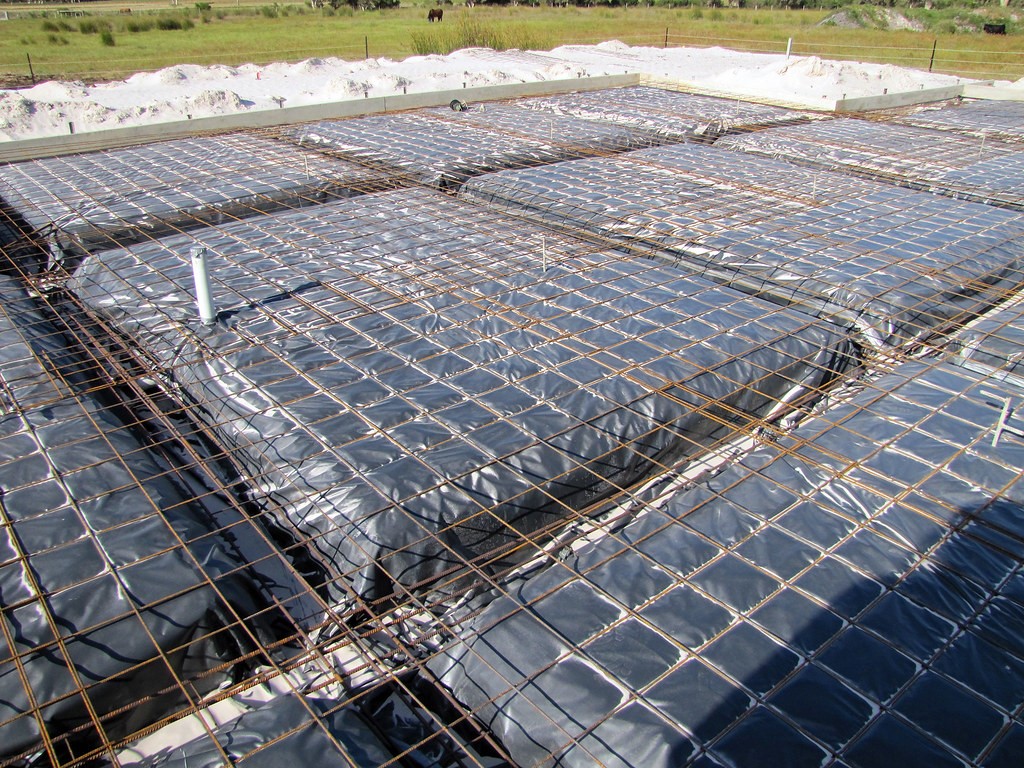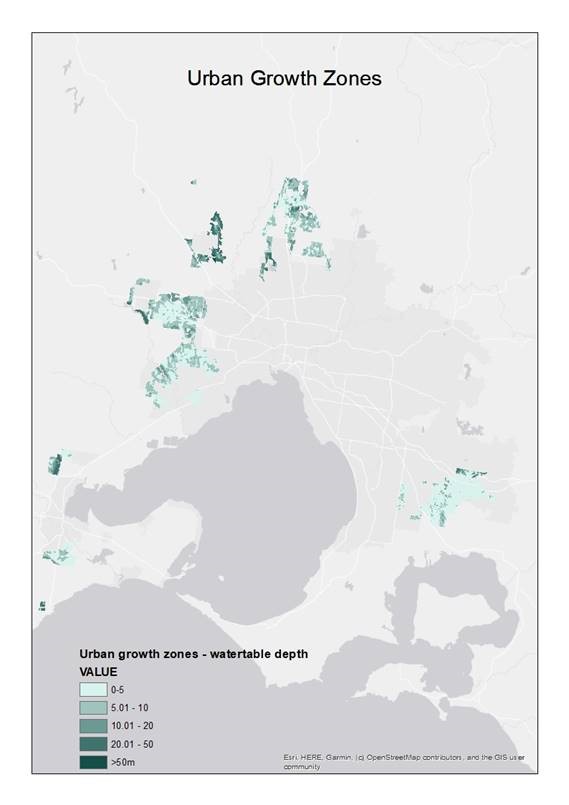August 28, 2020
As urban growth sprawls, CSIRO researchers investigate the effect high water table has on the conductivity of the soil and heat loss on uninsulated and insulated slabs. As we continue to expand and develop new regions this demonstrates the importance of slab insulation and continued research.

Foundation preparation before concrete pour. (Photo Credit Brett and Sue Coulstock)
Water table depth data for use in modelling residential building ground-coupled heat transfer
Water table depth influences ground-coupled heat transfer (GCHT) through the foundation of residential buildings. It also impacts energy consumption required for heating and cooling. For example, modelling of GCHT using a commercial 3D transient heat transfer program (HEAT3), shows that an uninsulated 400 m2 concrete slab floor on an average soil type with a water table depth of 3 metres has a 54% higher annual mean heat loss through the floor than if there was no water table (Table 1).
Knowledge of water table depth in Australia is required to determine the extent of its impact on Australian housing. Insufficient data currently exists to obtain a full picture.
A case study, using modelled water table depth data from Visualising Victoria’s Groundwater portal, indicates that in Victoria’s Urban Growth Zones (areas where new housing will be developed) water table depth is less than five metres in 46% of the area (Figure 1). In these areas, houses built with no insulation to the slab and on average soil type would have at least 24-54% higher heat loss than if there was no water table (Table 1). Insulating the slab reduces the amount of heat loss. A further 34% of Victoria’s Urban Growth Zones had water table depths of 5-10 metres. Water table depth varies not only at different locations but also over time. The uncertainty associated with estimated water table depth is large. Extending residential energy rating tools to account for water table depth would require the development of Australia-wide water table depth data.
Table 1. Increase in annual mean heat loss through 400 m2 concrete slab on average soil type at different insulation levels and water table depths (relative to no water table)
| Water table depth (metres) | Increase in annual mean heat loss through the floor (%) | ||
| R0 insulation | R1 insulation | R4 insulation | |
| 3 | 54 | 40 | 21 |
| 5 | 24 | 19 | 11 |
| 9 | 8 | 6 | 4 |
| 12 | 3 | 3 | 2 |
Figure 1. Water table depth in some of Victoria’s Urban Growth Zones (determined using Visualising Victoria’s Groundwater data)

(Reference: M. James, Z. Ren, T.J. Peterson, & D. Chen, Water table depth data for use in modelling residential building ground-coupled heat transfer, Proceedings of the 1st Asia Pacific Conference on Sustainable Development of Energy, Water and Environment Systems, AP.SDEWES2020.0365, 1-11 (2020))

